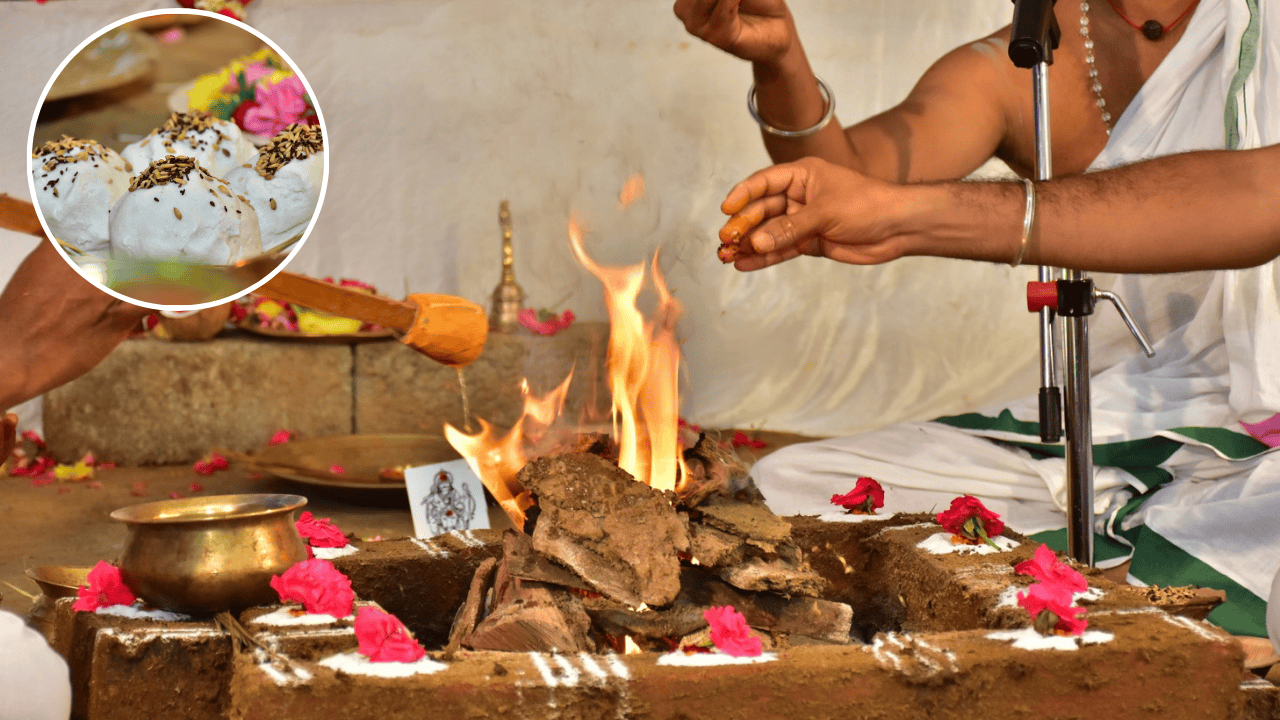Thila Homam at Gokarna: A Sacred Ritual for Ancestral Peace
Explore the sacred Thila Homam ritual at Gokarna, performed for ancestral peace and spiritual harmony in a divine coastal setting.

In the tranquil coastal town of Gokarna, where the Arabian Sea kisses the shores of Karnataka, spirituality and devotion come alive in profound ways. Among its rich tapestry of rituals and practices, the Thila Homam stands out as a significant ceremony rooted in ancient Vedic traditions. This ritual, performed to seek liberation for departed souls and alleviate ancestral curses, holds deep cultural, spiritual, and emotional significance for many.
Understanding Thila Homam
Thila Homam is a powerful Vedic fire ritual performed to appease and liberate the souls of departed ancestors. Derived from the Sanskrit words "Thila," meaning sesame seeds, and "Homam," referring to a sacred fire ceremony, the ritual involves offerings made into the fire to invoke divine blessings and ancestral peace. Sesame seeds play a critical role, symbolizing purification and spiritual elevation.
The primary goal of Thila Homam is to help departed souls attain "moksha" or liberation, ensuring they are freed from the cycles of rebirth. It also helps mitigate the effects of "Pitru Dosha," a condition arising from unfulfilled duties towards ancestors. It is believed to manifest as challenges in one’s life, such as financial instability, health issues, or familial discord.
Why Gokarna?
Gokarna is more than a picturesque beach destination; it is a sanctified pilgrimage town, often referred to as the "Kashi of the South." It is home to the revered Mahabaleshwar Temple, dedicated to Lord Shiva, and carries an aura of divinity that attracts devotees and seekers from across the globe.
According to ancient scriptures, Gokarna holds immense significance for performing rituals related to ancestors. The confluence of the holy rivers, sacred temples, and serene atmosphere creates an ideal environment for spiritual practices. Performing Thila Homam at Gokarna amplifies its benefits due to the town’s inherent sanctity and connection with the afterlife.
The Importance of Thila Homam
The belief in ancestral blessings and their impact on descendants’ lives is deeply rooted in Indian culture. When ancestors are not satisfied or at peace, their discontent can manifest as obstacles in the lives of their progeny. Thila Homam serves as a bridge to connect the living with the departed, ensuring harmony between the two realms.
Some common reasons to perform Thila Homam include:
-
Untimely or unnatural deaths in the family.
-
Lack of progeny or marital issues.
-
Recurring health problems or financial instability.
-
Pitru Dosha, as indicated in astrological charts.
-
A general sense of unrest or negativity in the family.
By addressing these concerns through Thila Homam, individuals seek not only spiritual cleansing but also a path toward renewed vitality and prosperity.
The Ritual Process
The Thila Homam ceremony is intricate, requiring the guidance of experienced Vedic priests. Here is a general overview of the steps involved:
-
Preliminary Arrangements: Before the ritual, the participants engage in purification practices such as bathing in sacred rivers or taking dips in the sea near Gokarna. These acts prepare the mind and body for the ritual.
-
Sankalpam (Intention): The priests chant specific mantras to invoke the participant’s intent for performing the ritual. This step aligns the individual’s energy with the divine purpose of the ceremony.
-
Offerings: Offerings of sesame seeds, ghee, and other sacred substances are made into the sacrificial fire while chanting mantras. The fire acts as a medium to convey the offerings to the divine and the departed souls.
-
Invocation of Deities and Ancestors: The priests invoke Lord Shiva and other deities along with the ancestors. The ritual prayers seek forgiveness for any unintentional wrongdoings toward the ancestors and aim to provide them peace.
-
Conclusion and Blessings: The ritual concludes with blessings from the priests, followed by a charitable act, such as feeding Brahmins or the needy. This act of kindness amplifies the ritual’s efficacy.
The Spiritual and Emotional Impact
Performing Thila Homam at Gokarna is not just a ritual but a transformative experience. Many participants report a sense of relief, lightness, and inner peace after the ceremony. It provides closure to those grieving the loss of loved ones and instills a sense of connection with their ancestral lineage.
From a spiritual perspective, the ritual clears karmic baggage, paving the way for personal and familial growth. It aligns one’s energies with universal vibrations, fostering harmony and positivity in life.
Practical Aspects
For those planning to perform Thila Homam at Gokarna, here are some practical considerations:
-
Selecting the Right Priest: Ensure you consult experienced Vedic priests familiar with the specific nuances of the ritual.
-
Timings: Certain days, such as Amavasya (New Moon) and Mahalaya Paksha (fortnight dedicated to ancestors), are considered especially auspicious for the ritual.
-
Location: The Mahabaleshwar Temple and its surrounding areas often host Thila Homam ceremonies. Coordinate with temple authorities or trusted agencies to organize the ritual.
-
Preparation: Adhere to prescribed fasting or dietary restrictions before the ceremony for maximum spiritual benefit.
-
Cost: The cost of performing Thila Homam can vary depending on the scale of the ritual and the materials required. It’s advisable to get a detailed breakdown of expenses beforehand.
Conclusion
In the serene embrace of Gokarna, where spirituality resonates in every corner, Thila Homam offers a profound way to honor and liberate ancestors while seeking divine blessings. It is a ritual steeped in meaning and transformative power, connecting individuals to their roots and ensuring a harmonious future.
Whether you are guided by tradition, faith, or the desire for peace and progress, performing Thila Homam at Gokarna is an experience that transcends the material world, touching the very essence of existence. The sacred flames of this ritual not only illuminate the path for departed souls but also light the way for the living, fostering unity, gratitude, and spiritual fulfillment.
What's Your Reaction?















